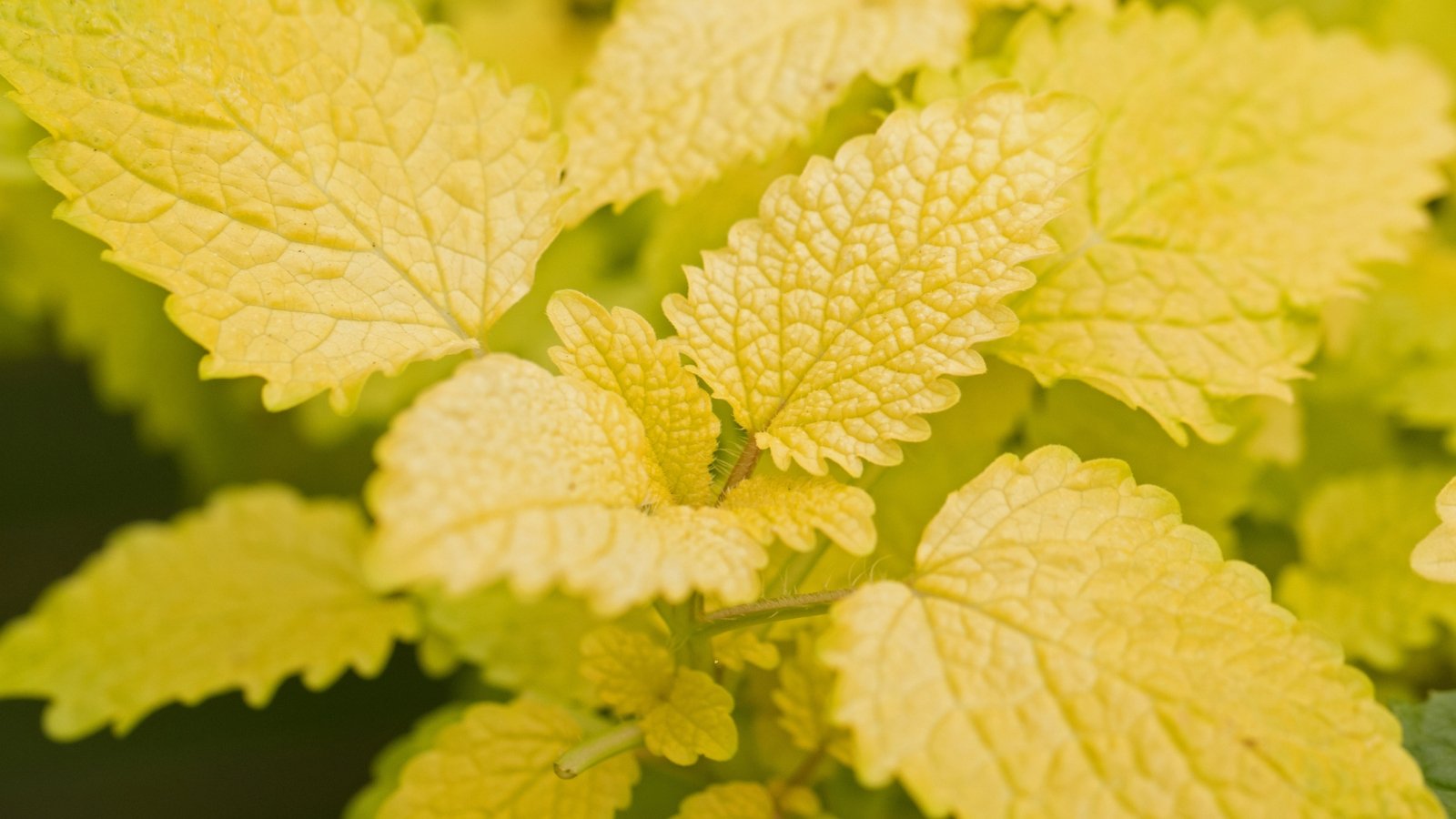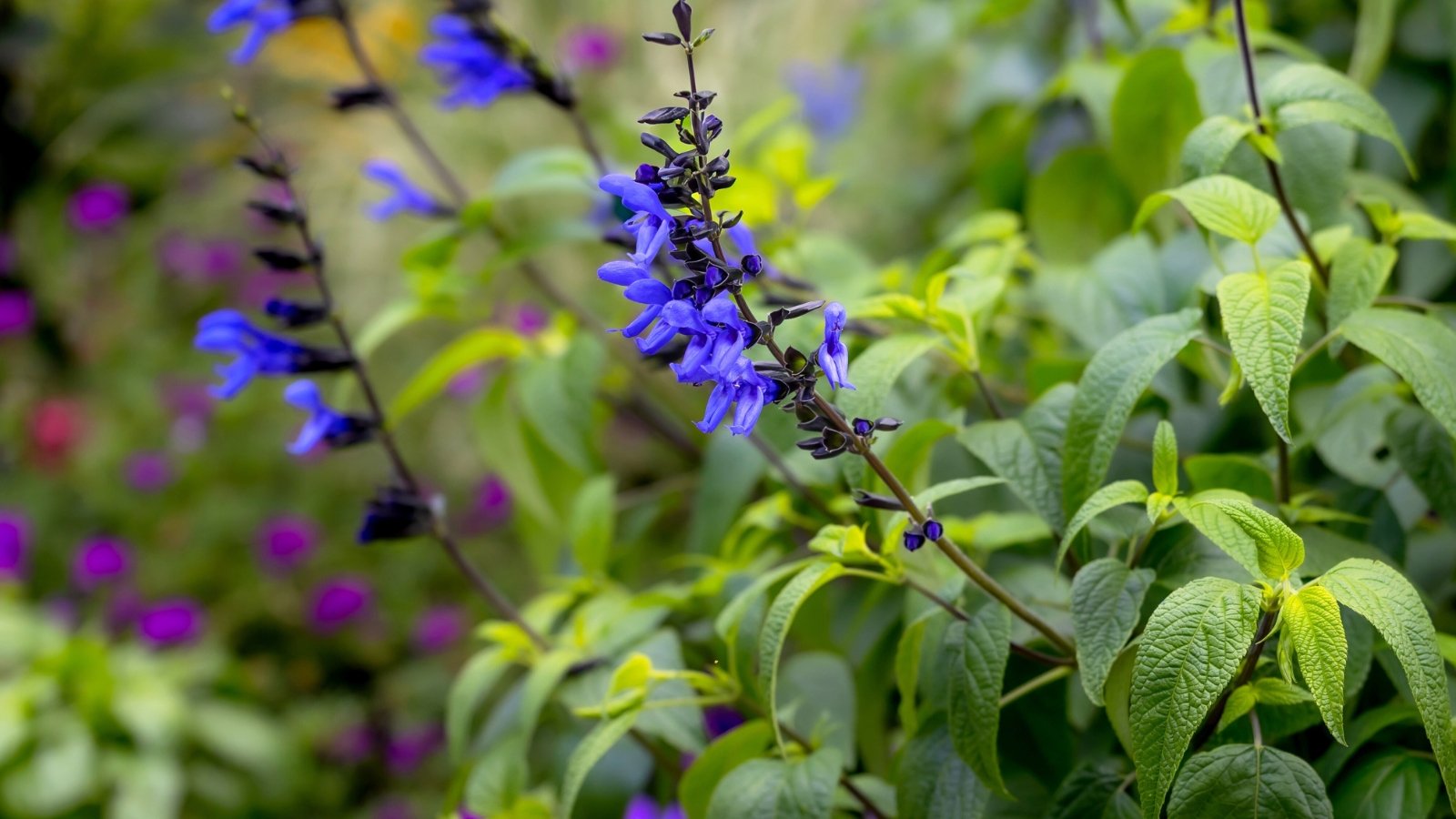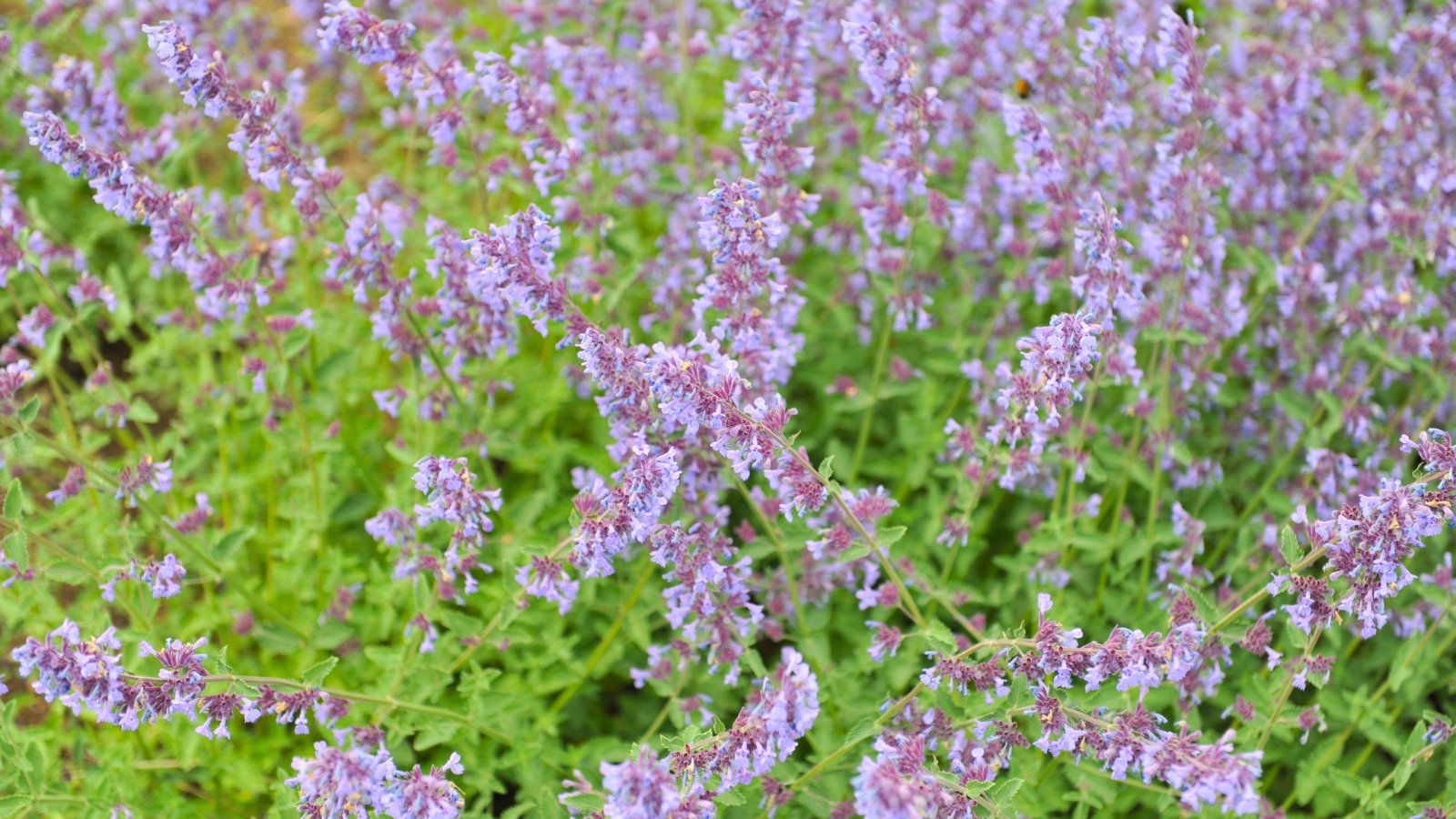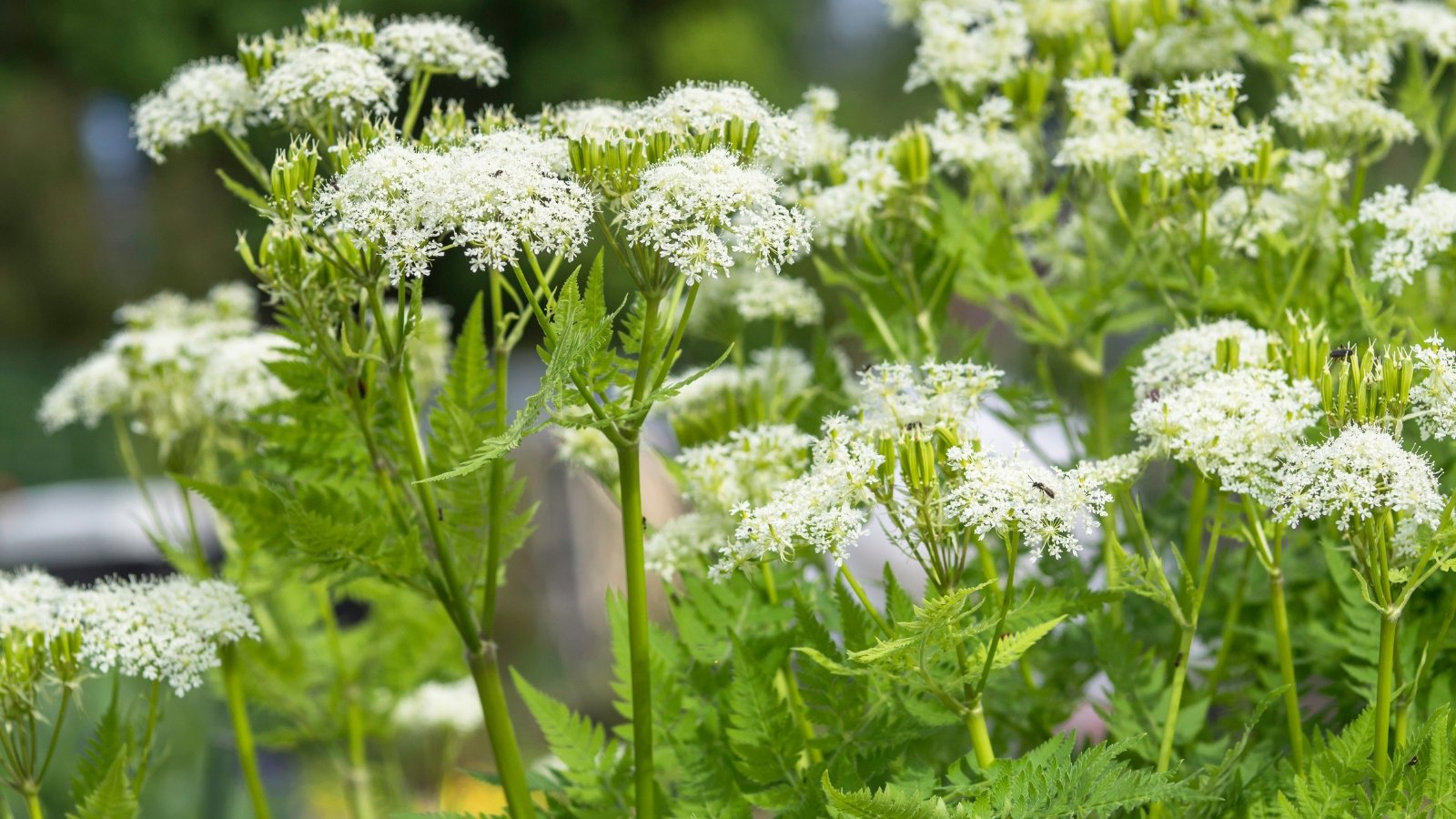PROTECT YOUR DNA WITH QUANTUM TECHNOLOGY
Orgo-Life the new way to the future Advertising by AdpathwayThere are so many things to love about herbs. They help us create magic in the kitchen with their range of flavors and aromas. They attract beneficial insects and pollinators with their pretty flowers. Some of them even repel nuisance insects, making them ideal companions in the vegetable garden. Many herbs also have remarkable ornamental value!
Through careful breeding, some herbs are cultivated specifically for their aesthetic qualities. Some ornamental herbs are suitable for consumption, while others are more appealing for their visual appearance. Sometimes, allowing herbs to flower alters their flavor, so many of these look better than they taste.
Ornamental herbs often have the same pest-repelling qualities and the same appeal to pollinators as excellent nectar sources. Some are both beautiful and delicious. Here are some of my favorite herbs that look wonderful in the ornamental garden.
Purple Petra Basil

German Chamomile


Lemon Balm ‘All Gold’
 The foliage alone makes it worth growing twice.
The foliage alone makes it worth growing twice.I may be partial to lemon balm because we share a first name, but the fragrance is my favorite thing about this herb. That is, it was until I laid eyes on ‘All Gold.’ This ornamental cultivar has bright chartreuse foliage that practically glows in the sunlight.
‘All Gold’ is beautiful enough for garden borders. It’s also flavorful and fragrant. In mid-to-late summer, it will produce attractive, cream-colored flowers if allowed to do so. Flowering will affect the flavor of this herb, but it also ups its value as an ornamental.
Basil ‘Purple Petra’
 Let this basil bloom to keep the bees happy.
Let this basil bloom to keep the bees happy.This is one of my personal favorite herbs this year. I have it in my kitchen garden, and it really adds a touch of elegance. ‘Purple Petra’ basil has gorgeous, deep purple leaves that take on more of a green tint as they age, creating a pretty ombre effect. It has a spicy, sweet flavor and aroma, making it a nice complement to tomatoes.
‘Purple Petra’ is an ornamental cultivar, but it’s also a flavorful variety that many gardeners grow for its edible qualities. Allowing it to flower will dull the flavor, but please the bees. The good news is that basil is easy to grow from seeds, so you can grow one to eat and others to flower!
Thyme ‘Magic Carpet’
 Spreads low and wide with bursts of bright pink blooms.
Spreads low and wide with bursts of bright pink blooms.I love thyme in the kitchen, but what about in the garden? Some edible thyme varieties aren’t the most ornamental. ‘Magic Carpet’ is an ornamental cultivar that looks wonderful and makes an excellent ground cover. You can eat this herb, but there are better-tasting thyme varieties.
‘Magic Carpet’ has a low, creeping habit with tiny, dark green leaves that have a pleasant herbal scent when walked on. In early summer, the whole plant bursts into bloom, covered with bright pink flowers, like a magenta carpet. It’s a lovely, aromatic, ornamental herb.
Rosemary ‘Tuscan Blue’
 Blue-violet blooms light up late winter with ease.
Blue-violet blooms light up late winter with ease.Rosemary is an incredibly easy herb to tend to once established. Evergreen and drought-tolerant, it’s a perfect plant for the gardener who wants attractive foliage that also smells nice and tastes incredible when baked into a loaf of sourdough. They are also great bloomers, and pollinators love their flowers.
‘Tuscan Blue’ is a dual-purpose rosemary. It’s tall and shrubby, with aromatic foliage and good flavor. It has a more upright growth habit than most cultivars. As an ornamental herb, it makes a lovely small shrub, and in late winter, it produces beautiful, blue-violet blossoms. It may also bloom intermittently throughout the year in mild climates.
Oregano ‘Kent Beauty’
 Cascading stems with rosy bracts steal the spotlight fast.
Cascading stems with rosy bracts steal the spotlight fast.Ornamental oreganos are different from the culinary types. Their leaves are not as tender, and are often grown for their flowers rather than their flavor. ‘Kent Beauty’ is a popular ornamental variety with cascading stems of hop-like bracts. The bracts are rose pink, and tiny purple flowers peek out from within.
The trailing or cascading habit of ‘Kent Beauty’ makes it perfect for hanging baskets. The leaves are edible, but they lack flavor. However, they do have that signature, spicy oregano scent. Grow this herb for its ornamental value and use Greek oregano in the kitchen.

Fennel ‘Smokey Bronze’
 Adds height and fragrance with airy, bronze-tinted foliage.
Adds height and fragrance with airy, bronze-tinted foliage.Airy plumes of bronze-colored foliage characterize this fennel variety. It’s edible and has good flavor. It’s also stunning, adding a feathery texture to the landscape. It grows up to six feet tall, making it a nice addition to the background of your borders.
‘Smokey Bronze’ gets its name from the bronze-purple foliage, which is delicate and fern-like. It’s a host plant for the Eastern Swallowtail butterfly, and the lovely umbels of yellow flowers are attractive to pollinators in the summer. The whole plant has an anise-like scent and flavor.
Chamomile
 Soft green ground cover with cheerful yellow-centered blossoms.
Soft green ground cover with cheerful yellow-centered blossoms.Both German and Roman chamomile are lovely to grow in the garden or in pots. German chamomile is an annual, loved for its apple-scented foliage and dainty, daisy-like flowers that grow in a mass, mingling with the feathery foliage. The small, white flowers have yellow centers and show up in late spring to early summer.
Roman chamomile is a low-growing, perennial herb with significant ornamental value. If you’re looking for a ground cover for areas with light traffic, Roman chamomile is an excellent choice. It has a creeping, mat-forming growth habit. The flowers are lovely for making a calming herbal tea, and they also look great in dried arrangements.
Salvia ‘Black and Bloom’
 Aromatic leaves and flowers brighten the garden until frost.
Aromatic leaves and flowers brighten the garden until frost.Salvia is an herb in the same family as sage, but it’s usually grown as an ornamental plant and doesn’t have a robust flavor. What it does have are attractive, aromatic foliage and showy flowers. ‘Black and Bloom’ features deep, cobalt blue, tubular flowers that attract numerous hummingbirds and butterflies.
While it’s not the best for eating, salvia is an ideal ornamental herb. It flowers for an extended period, beginning in early summer and continuing until the first frost. This variety grows to be approximately three to four feet tall, with a similar spread, and is drought-tolerant once established.
Catmint ‘Walker’s Low’
 Easygoing catmint brings quiet charm to sunlit garden corners.
Easygoing catmint brings quiet charm to sunlit garden corners.Catmint is an ornamental herb in the mint family that is not commonly used for cooking, but it has a solid spot in the garden. It has a similar look to salvia, and is also quite drought-tolerant and low-maintenance. If you prefer the herbaceous look and need water-wise options, catmint is an excellent choice.
‘Walker’s Low’ is a popular variety featuring spikes of lavender-blue blossoms that bloom over an extended period. It blooms from late spring to early fall. Don’t confuse this with catnip. The plants belong to the same genus, but are not the same species.
Sweet Cicely
 A quietly sweet herb that thrives where sunlight is gentle.
A quietly sweet herb that thrives where sunlight is gentle.Sweet cicely is a charming ornamental herb characterized by its lacy, fern-like foliage and umbels of small, white flowers, blooming in late spring and early summer. The flowers resemble Queen Anne’s lace. The seeds are aromatic and edible when ripe, and the entire plant has a light licorice flavor and aroma.
This attractive herb has a rich history of multiple uses. It’s considered medicinal and has a natural sweetness that makes it easy to consume when prepared for these purposes. It prefers partial shade, making it ideal for areas in the garden that don’t receive full sunlight.
Anise Hyssop ‘Apricot Sprite’
 Perfect for shady summer spots where it loves to thrive.
Perfect for shady summer spots where it loves to thrive.Anise hyssop is another medicinal herb that often finds its way into many ornamental gardens. It’s excellent in the pollinator garden, too, as hummingbirds and bees love its sweet nectar. Though not a true anise, the foliage has a distinct licorice aroma.
‘Apricot Sprite’ is a highly ornamental variety featuring tall, flashy spikes of salmon- to coral-colored flowers. It’s perfect for bringing color and texture to borders and mixed beds. I find that in areas with hot summers, anise hyssop prefers shade in the afternoon. It’s quite drought-tolerant and has few issues with pests or diseases.
Garlic Chives
 A natural pest guard thanks to its strong garlic scent.
A natural pest guard thanks to its strong garlic scent.You may be growing garlic chives for their edible leaves, but they also make great ornamental plants. The dense clumps of edible, strappy leaves are quite pretty. However, if you leave them to mature, by late summer, you’ll have elegant umbels of delicate white flowers in the garden.
The slender stems with attractive flower heads are suitable for cut arrangements, but they have a garlic-like scent that may be unpleasant to some. This herb is great for deterring pests in your beds, as many insects dislike the smell.
African Blue Basil ‘Dark Opal’
 A perfect blend of beauty and buzzing garden friends.
A perfect blend of beauty and buzzing garden friends.I’m always a fan of African blue basil in the garden. It’s an excellent pollinator plant, boasting a pleasant aroma, beautiful foliage, and vibrant flowers. Not usually grown for its edible qualities, you can eat it, and it makes a good pesto. Its flavor is spicy, more like Thai basil than its sweet Italian cousins.
The purple stems of this herb bleed into the green foliage, and the shade touches all parts of the plant. The flower spikes are tall with lavender blossoms that pollinators, especially bumblebees, adore. It grows quite large and shrubby, and looks great in mixed beds.
Borage
 A natural pest shield for tomatoes and strawberries nearby.
A natural pest shield for tomatoes and strawberries nearby.Borage is an ornamental and edible herb that makes an excellent companion in the vegetable garden. It works well in many spaces, adding color and attracting a wide range of beneficial insects. The soft, fuzzy leaves and cornflower blue flowers are edible and have a flavor often compared to cucumbers.
This is a great bloomer that brings a lot of color and personality to ornamental beds and kitchen gardens. It may also repel tomato hornworms, so consider planting it near your tomatoes, strawberries, and brassicas for extra protection from pests. It’s fast-growing and low-maintenance, and deer and rabbits won’t bother it.

Fernleaf Lavender
 Blue-violet spikes bring a delicate pop of color often.
Blue-violet spikes bring a delicate pop of color often.Lavender is one of the most popular scents around. In candle making, skin products, and essential oil production, it has few rivals. It’s also an excellent ornamental herb. Fernleaf lavender is one of the fanciest and most ornamental varieties, in my opinion.
Fernleaf lavender has soft, silvery-grey, fern-like foliage with a feathery appearance. The flower spikes appear nearly year-round in mild climates, boasting bright, blue-violet flowers with a lightly camphorous scent. It’s not the strongest-smelling lavender, but it’s undoubtedly one of the prettiest and has tons of ornamental value.


 3 weeks ago
19
3 weeks ago
19





















 English (US) ·
English (US) ·  French (CA) ·
French (CA) ·